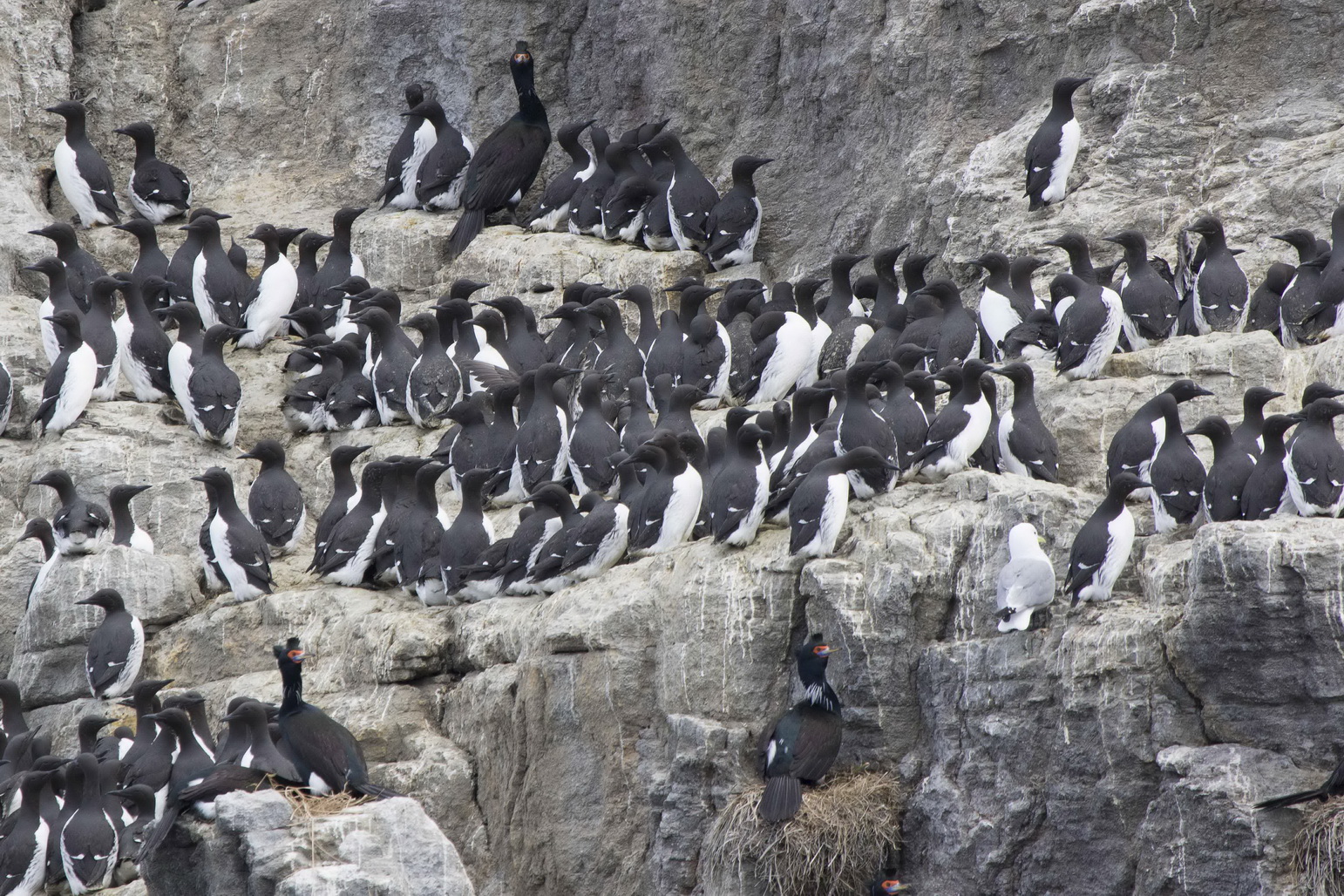Have a look at the map and you may think, that Medny Island – the second largest of the Commander Islands – is very close to Bering Island. Meanwhile, it takes us 160 km to go by boat from Nikolskoye village to Medny Island. If you think, that this is not that far, consider, that in reality the island is very difficult even to see, because of bad weather, let alone to visit. On April 2-3 the researchers of the Commander Islands Nature and Biosphere Reserve reached Medny Island for wintering anseriformes and eared seals counts.
We’ve got used to waiting for the weather by the sea through many years of life and work on the Commander Islands. So, that was the first thing we did during Medny Island expedition – several weeks we were waiting for clear sky, light air and calm sea. For the research group to have time to get back to Bering Island we need nice weather to persist for at least 2 days. And finally, on April 2-3 all necessary conditions came true and Deputy for Science Evgeny Mamaev, Ornithologist Dmitry Pilipenko and Garage Foreman Edward Chekalsky left on April 2 early in the morning.
Medny Island can rarely be seen entirely from the strait. Photo by Evgeny Mamaev
If the waves are small, it takes 3 hours to get to Medny, but not this time – the participants had a stop at Monati Cape, the southernmost point of Bering Island, to count sea lions. After coming to Medny Island the scientists accomplished a part of the planned jobs and went to sleep. The next day, on April 3, they continued their work, including anseriformes and eared seals counts.
During counts. Photo by Evgeny Mamaev
It’s worth mentioning, that it is the first work of this kind on Medny Island in decades. Previous data on population numbers, density, species composition, gender and age of the wintering anseriformes birds were fragmentary, if not insufficient. The situation was the same with data on eared seals – sea lions and northern seals. The researchers went around the island and visited every corner of its coast to examine the wintering grounds, seabirds colonies and rookeries.
According to the preliminary data, acquired during the counts, anseriformes wintering grounds on Medny Island differ from Bering Island ones. The population numbers are lower, probably because of climatic and geographical peculiarities of Medny. Its terrain is similar to the southern part of Bering Island – mountains, rocks, less reef platforms and shallow waters, where birds can easily find food. So the scientists came to a conclusion, that wintering grounds on Medny are analogous to those on Bering Island in many ways, especially in numbers of some species.

Seabirds colonies. Photo by Dmitry Pilipenko
The researcher found 7 types of anseriformes: the emperor goose, the eider, the Steller’s eider, the harlequin duck, the garrot, the mallard duck, the buff-breasted merganser. Except for anseriformes they found the horned grebe, but we cannot say for sure if the birds winter on the island or stay there on the way to the final destination. Generally, on Medny Island there are less anseriformes, then on Bering Island.
The team visited seabirds colonies as well. On both islands cormorants, guillemots, kittiwakes, red-legged kittiwakes and northern fulmars start to come to their nesting places. Some individuals even started building nests and prepare for breeding.
Counts of eared seals were conducted in spots of their high concentration – Severo-Zapadnoye, Severnoye rookeries and Monati Cape on Bering Island, Bobroviye Kamni, Urilye and Yugo-Vostochnoye rookeries on Medny Island and on Ary Kamen Island. The highest numbers of sea lions were found on Ary Kamen. Bull sea lions will start to protect their parts of rookeries for future harems in mid-May, northern fur seals will start a bit later. Several days after that, females come and bear the pups. After approximately 10 days they breed again.
Sea lion on Monati Cape, Bering Island. Medny Island can be seen on the background. Photo by Evgeny Mamaev
On the Commander Islands the last full examination of sea lions rookeries in spring period took place 12 years ago in 2005. The highest quantities – all in all 500 individual - were found on Ary Kamen Island and on Yugo-Vostochnoye rookery of Medny Island. According to the recent counts, there are 200 individuals and only several of them were found on Yugo-Vostochnoye rookery, which means the change in distribution of this species on the Commander Islands. In March-April of 1965 the Commander Islands were the wintering ground for more then 10 000 sea lions and half of them stayed on Yugo-Vostochnoye rookery of Medny Island.
Sea lions on Ary Kamen. Photo by Evgeny Mamaev
The recent examination of the rookeries brought out the fact that the numbers of wintering sea lions dropped by half. Counts of eared seals on Medny Island should be regular and performed annually. It will give us a chance to understand the typical distribution of sea lions on the islands, which is essential for the research of their ecology and biology and for revealing the reasons of the population decrease.









